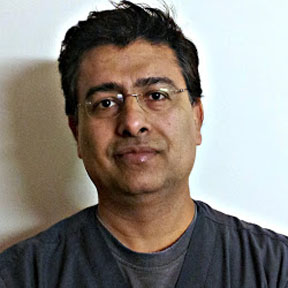
Wanted: a health care model for India
With a population of more than 125 crore, the contemporary India yearns for another opportunity to become a global leader. Looking at our credentials of democracy, diversity and tolerance, many look upon us as the future of the world. But rural-urban divide and non-inclusive lop sided development remain a matter of concern.
While Silicon Valley in USA thrives upon the innovative minds of Indians, back home the country has no credible research and development (R & D) and innovations to boast of. Similarly, Indians constitute 5% of doctor workforce in USA (and 20 % of its International Medical Graduates). Indian health workers are also the pillars of medical services in Middle East.
In contrast, in India we continue to struggle with health challenges. With a massive population load and gross national income per capita of $3,900, India spends just 4.1 % of its national budget on health. It has one doctor for 1700 citizens (W.H.O. says the optimal number should be 1:1000). Cuba has 6.7 and America 1.5 doctors for their 1000 population.
With its gross national income per capita of $54,000, USA spends about 18 % of its budget on health. However, this is not to say that everything is in perfect shape in USA. In fact, many experts feel that American health system is ‘broken’ due to its inability to provide health care to millions of uninsured people.
With this background, let us study the basic health care delivery models that are prevalent in the world.
The most prevalent service model is ‘Out of Pocket.’ In India, we may not have any problem in understanding this concept: You are responsible for footing the fee and bills to the doctor and/ or hospital. Well, many will say, the government does provide free universal health care to all its citizens.
That is true. India claims (unlike USA, as we shall see below) that anyone can visit a government healthcare facility and avail treatment literally free of cost. However, in actuality, the government health facilities are dilapidated, over-crowded and dysfunctional thanks to poor work ethics, chronic absenteeism and corruption, thereby limiting the access for a large chunk of population.
Contrast this with Britain’s National Health System (called Beveridge Model). Here, the government provides you healthcare through its government doctors, clinics and hospitals. The private medical sector is negligible. Everyone is eligible to choose a General Practitioner (G.P.) who is your primary doctor and avail medical care free of cost (the care is free at the point of use).The government will pay your bills.
In communist Cuba, hailed by many as the successful model for a developing world, the same system is seen in extreme form: the whole health care system – be it clinic or a pharmacy – is owned by the government. No doctor is allowed to have a private practice.
However, Canada also provides a universal health care to its citizens, but in a different way. The government provides every citizen a health insurance (National Health Insurance model). The patient can choose to go to a private clinic or a government doctor or facility.
Germany has a slightly different system. The government mandates a health insurance for everyone, and that is provided by the employer. The employee also contributes a part of that. But the whole system is created not to make profit and must cover everyone, even if unemployed.
The above models are typical examples of what we call Socialized Medicine, where government pitches in to provide subsidies through taxation. In other words, these are public-funded health care programs.
Fuzzy concept
When it comes to USA, the concept of universal health care becomes fuzzy. According to Institute of Medicine, USA is an exception among the developed countries that does not provide universal health care. Here the government hardly runs any health care centers (except a few county hospitals administered by county governments. One famous example is Cook County hospital in Chicago).
For majority of people, health care benefits come through their jobs. In other words, your employer will buy you a private health insurance. You also pay a portion of that premium per month, though. The companies that issue health insurance are called Health Maintenance Organizations (H.M.Os) and they are for profit.
But if you become unemployed or operate your own business, you have to buy your own private health insurance. However, for armymen, the government provides healthcare through government-owned and operated facilities (Department of Veteran Affairs). For senior citizens (more than 65 years of age), the government runs Medicare insurance scheme and thus bears the cost of their medical bills (Canadian system).
Thus it is obvious that India has a mixed system where the government pledges to provide health care, but is unable to meet the demands. The private health sector is robust but the poor and the needy may not be able to use the services for want of money. How do we strengthen the health care system in India, then?
We need to increase access to affordable and quality health care for everyone. India needs to increase its budget share on health, particularly preventive and primary health care.
In addition, we must produce more doctors and para-medical forces. Instead of running the health facilities itself, the government will do well to broaden health insurance to its citizens and put good regulations in place so that through private sector, it can provide much needed health care to its citizens.
The author practices neonatal medicine in Chicago, USA. Email: pedia333@gmail.com
Dr Munish Kumar Raizada






